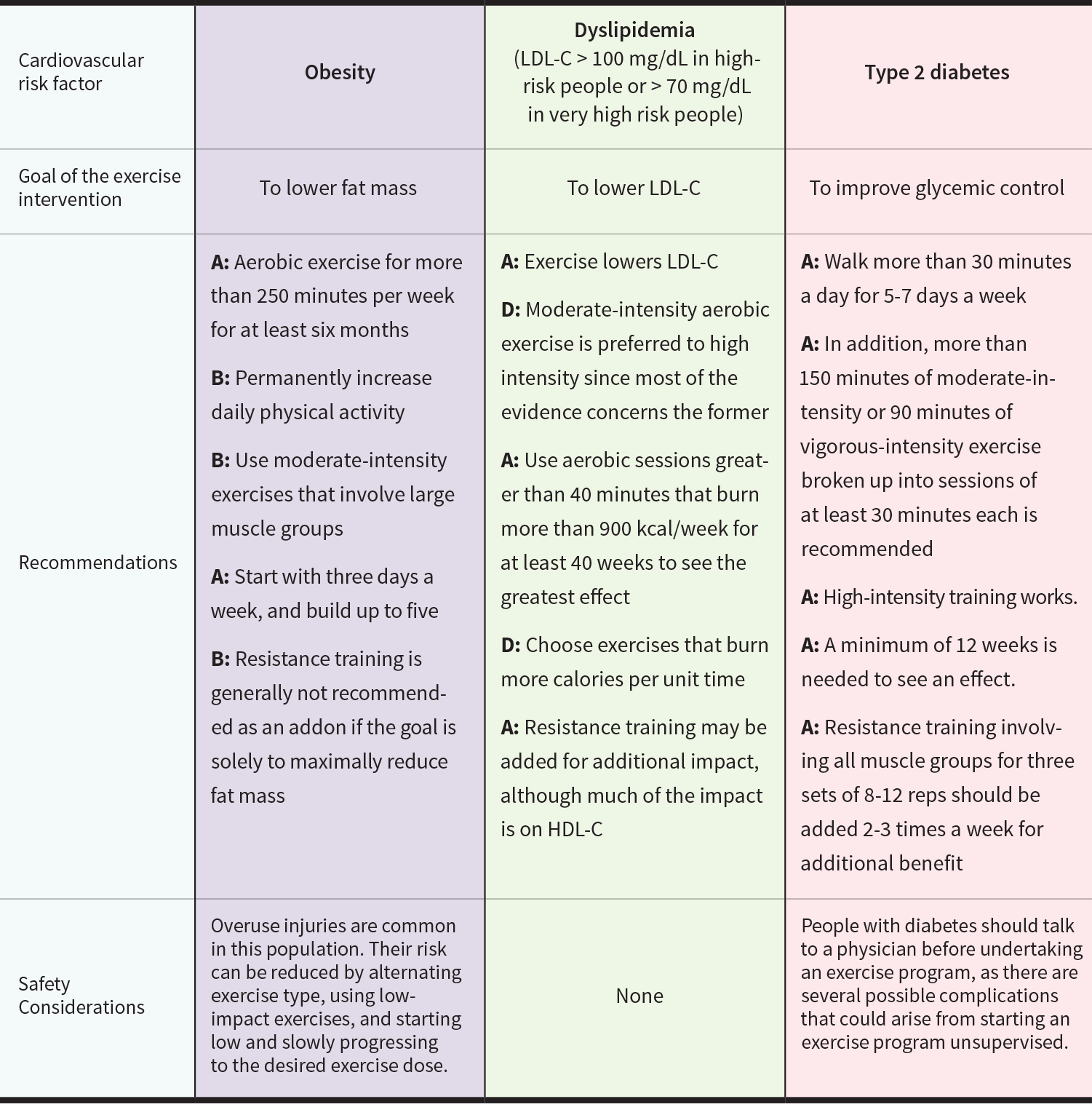Different types of cardiovascular disease (CVD) may benefit most from different amounts, types, or doses of exercise, and major guidelines don’t provide such tailored advice. In 2018, a team of experts created a system called the EXercise Prescription in Everyday practice & Rehabilitative Training (EXPERT) tool to help clinicians give their patients tailored exercise advice based on their needs.
The team released a consensus statement that provides specific exercise recommendations for several cardiovascular risk states based on the evidence they considered.[1] Some of the team’s recommendations are summarized below.
Each recommendation is accompanied by a grade denoting the level of the recommendation.
“A” indicates the recommendation is supported by high-quality systematic reviews or randomized controlled trials that are directly relevant for the population at hand.
“B” indicates high-quality observational evidence or inference from randomized trials supports the recommendation.
“C” indicates the recommendation is supported by well-conducted case-control or cohort studies with overall consistent results that could be applicable to the target population.
“D” indicates the recommendation is supported by poorer-quality observational evidence, inference from higher-quality observational evidence, or expert opinion.
Exercise recommendations by CVD risk factors

Reference: Hansen et al. Sports Med. 2018.[1]


